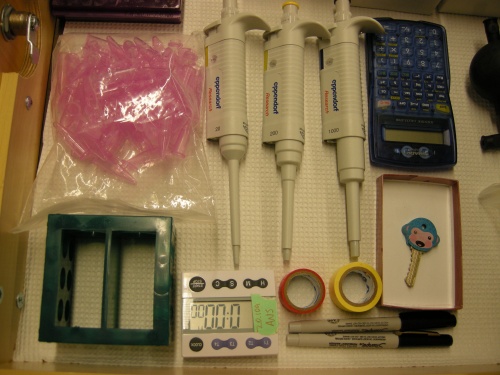Difference between revisions of "20.109(S11):Module 2"
m |
|||
| Line 2: | Line 2: | ||
<div style="padding: 10px; width: 640px; border: 5px solid #3399FF;"> | <div style="padding: 10px; width: 640px; border: 5px solid #3399FF;"> | ||
| − | |||
==Module 2== | ==Module 2== | ||
| Line 10: | Line 9: | ||
'''TA:''' Adrian Randall | '''TA:''' Adrian Randall | ||
| + | As engineers, we would like to make useful objects that behave in a predictable fashion. As biological engineers, we face unique challenges in implementing our ideas: the biological machines we create may evolve, their components may not always play nicely together, and slight variations in the environment might substantially affect their function. In this module, we will work on understanding and improving an edge detection system effected by bacteria. By way of diffusible signals and photosensitivity, a single cell population is able to copy the outline of an image placed above it. However, the system can be finicky, with low contrast, poor resolution, and little margin for variability in preparation. Using a more easily manipulatable system (not based on light) as a tool, we will attempt to improve system robustness and transfer our knowledge to improve the light-based system. | ||
| + | |||
| + | <font color=red>need an image</font color> | ||
| + | [[20.109(S11): TA notes for module 2| TA notes, mod 2]] | ||
[[20.109(S11): M2 Temporary Space| Mod 2 draft material]] | [[20.109(S11): M2 Temporary Space| Mod 2 draft material]] | ||
Revision as of 20:24, 10 December 2010
Module 2
Instructors: Ron Weiss and Agi Stachowiak
TA: Adrian Randall
As engineers, we would like to make useful objects that behave in a predictable fashion. As biological engineers, we face unique challenges in implementing our ideas: the biological machines we create may evolve, their components may not always play nicely together, and slight variations in the environment might substantially affect their function. In this module, we will work on understanding and improving an edge detection system effected by bacteria. By way of diffusible signals and photosensitivity, a single cell population is able to copy the outline of an image placed above it. However, the system can be finicky, with low contrast, poor resolution, and little margin for variability in preparation. Using a more easily manipulatable system (not based on light) as a tool, we will attempt to improve system robustness and transfer our knowledge to improve the light-based system.
need an image
Mod 2 draft material